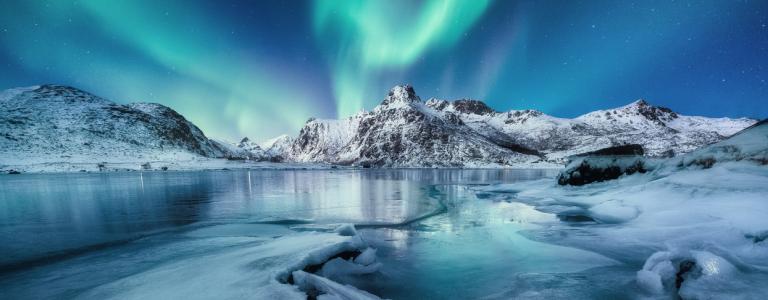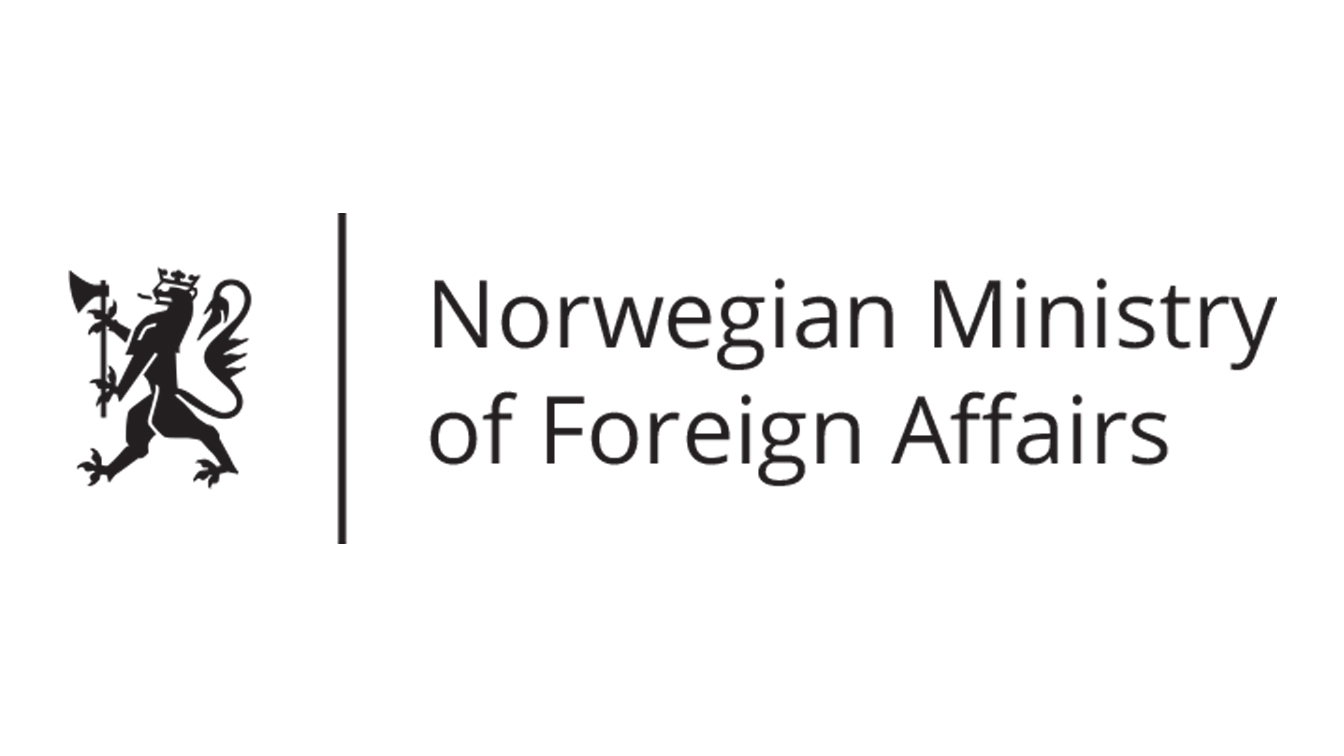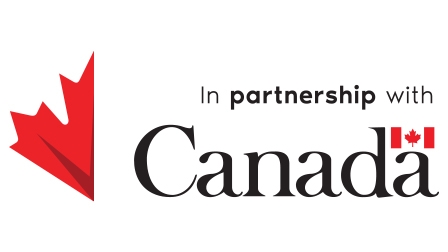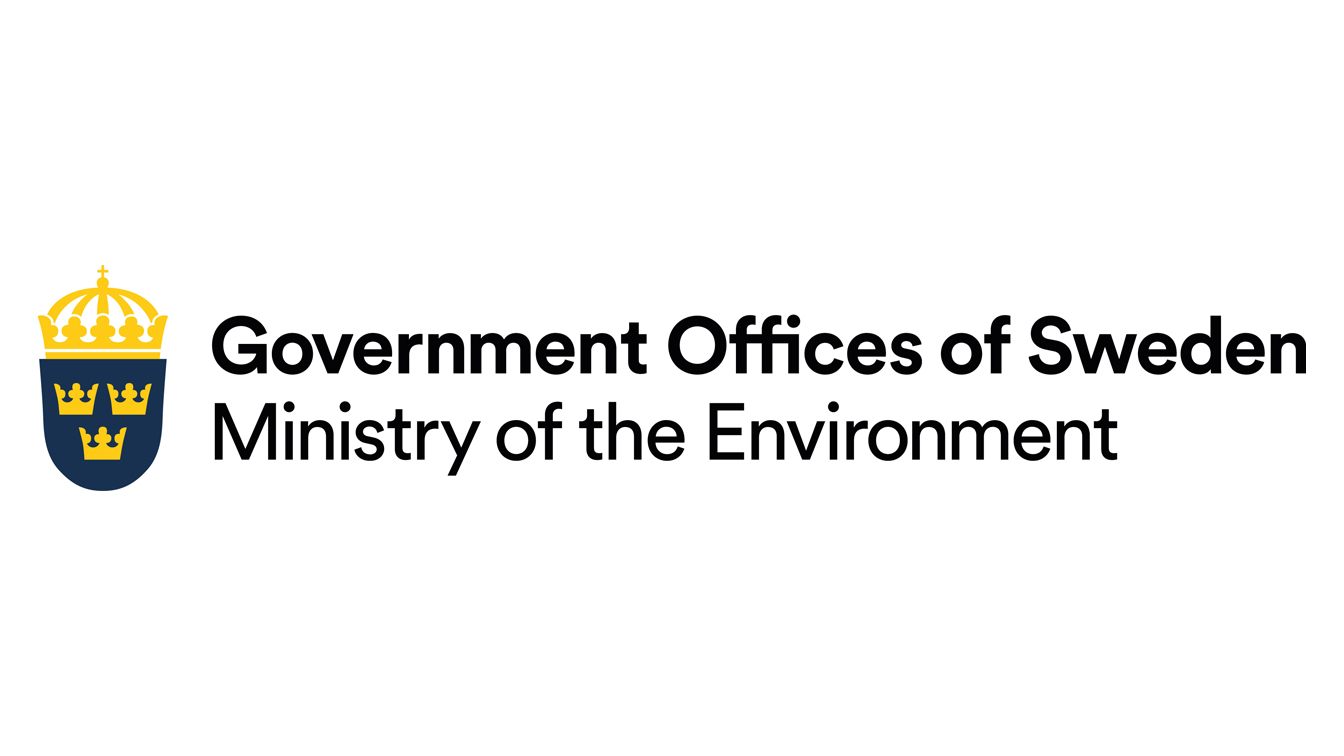A Warming Arctic is a Warning for the World
Still Only One Earth: Lessons from 50 years of UN sustainable development policy
The Arctic is warming at a faster rate than other regions in the world and summer sea ice could disappear entirely as early as 2035. The decline in sea ice is causing changes in atmospheric circulation patterns—resulting in more extreme temperature fluctuations around the world—while increasing potential for more militarization, commercial shipping, tourism, and oil and gas drilling in one of the world’s most fragile ecosystems. Cooperation among Arctic states is needed more than ever to ensure the Arctic, its inhabitants, and their way of life survive. (Download PDF) (See all policy briefs) (Subscribe to ENB)
In 2016, Italian pianist Ludovico Einaudi played a hauntingly beautiful composition, “Elegy for the Arctic,” as he floated on an artificial ice platform in the Arctic Ocean constructed for the occasion. Seeking to raise awareness about the “purity and fragility” of the Arctic, he played a grand piano against the backdrop of the stunning Wahlenbergbreen glacier in Svalbard, Norway (Knijf, 2016). Greenpeace Spain organized the event to bring the world’s attention to the need for an Arctic sanctuary to protect one of the world’s most fragile ecosystems; one whose existence as we know it is threatened by climate change, pollution, and biodiversity loss.
The ancient Greeks named the region Arktos, meaning bear, “a reference to the Great Bear constellation that circles the northern sky” (New Internationalist, 2009). The name is fitting as the polar bear has become the most iconic symbol of the Arctic. Increasingly unable to access once plentiful food as sea ice disappears, the world’s largest land-based predator and other Arctic wildlife are struggling to survive. As the glaciers around them melt, their very existence is threatened, as are the ways of life of Indigenous Peoples who have called the Arctic home for thousands of years. As climate change opens up shipping routes and access to mineral deposits, this environmental devastation is likely to accelerate.
Given the immense challenges posed by climate change and other environmental threats, cooperation among the Arctic states, and the international community more generally, is needed now more than ever to ensure the Arctic, its inhabitants, and their way of life survive.
What Is the Arctic?
The Arctic is the northernmost region on Earth. It is dominated by the Arctic Ocean basin, with the Russian Federation, the United States, Canada, and the five Nordic countries (Denmark, Finland, Iceland, Norway, and Sweden) all claiming part of it.
It is a place of extremes that easily capture the imagination: hard to reach; hostile, yet stunningly beautiful; fragile, yet rugged.
About four million people live in the Arctic region, with Indigenous Peoples making up a minority of the population. They include, to name a few: the Inuit in Canada, Alaska (US) and Greenland; the Yu’pik, Iñupiat, and Athabascan in Alaska; and the Sami in Norway, Sweden, Finland, and the Russian Federation. Although ethnically diverse and geographically dispersed, they hunt the same animals, organize their communities along cooperative lines, and have adapted to “a harsh, yet abundant, environment” (New Internationalist, 2009).
Climate Change and the Arctic
The Arctic could be warming up to four times as fast as other regions in the world, according to research undertaken by a team of climate scientists (Voosen, 2021), with a recent study predicting summer sea ice could disappear entirely as early as 2035 (Borunda, 2020).
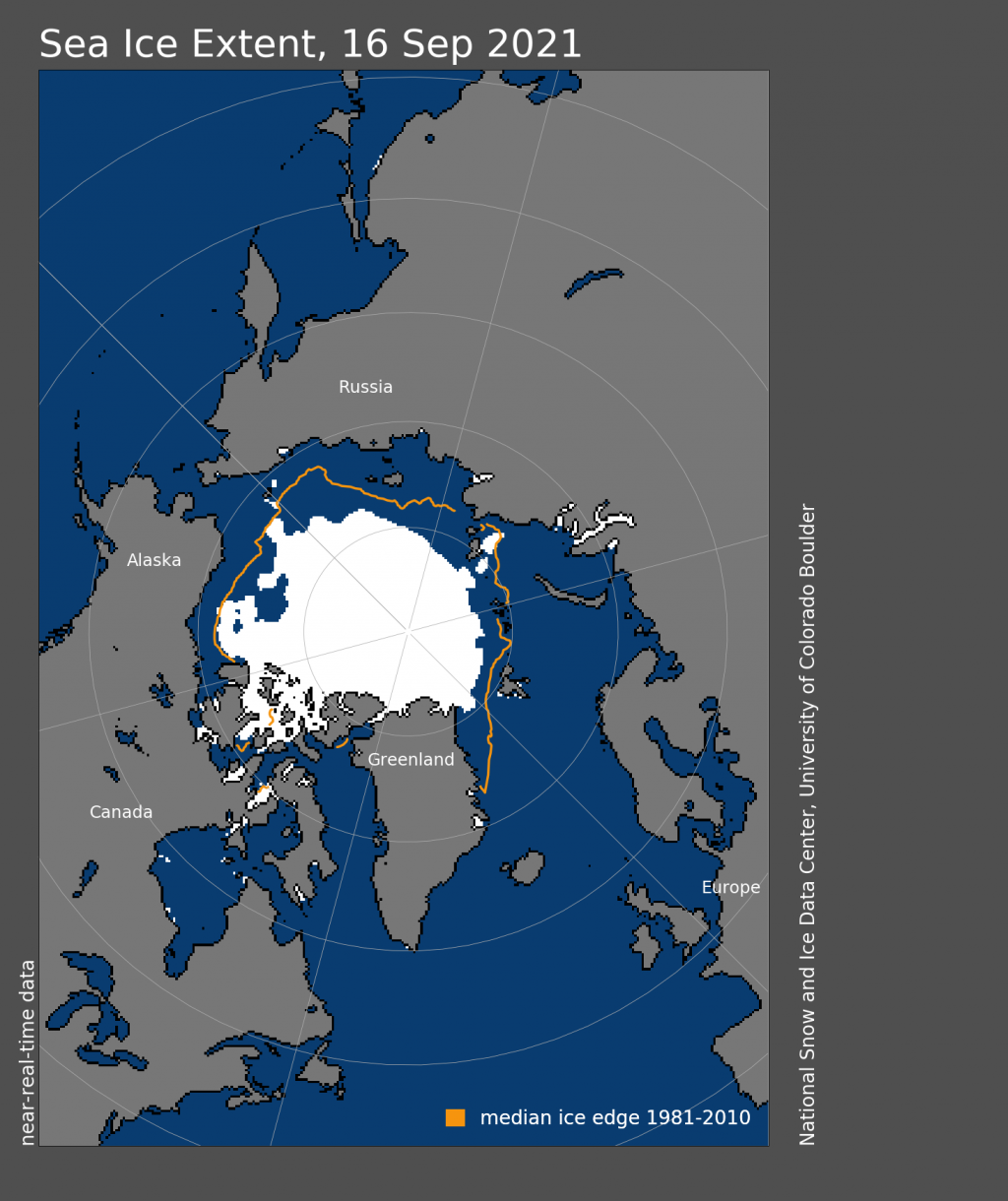
Arctic sea ice extent is declining each year (IPCC, 2019), with approximately 75% of ice volume disappearing in the last 15 years alone. The remaining ice is thinner and of poorer quality (Purtill, 2021). For the first time since record keeping began, rain fell on the summit of Greenland, a “reliably frozen region” that sits two miles above sea level (Sierra Club, 2021). Scientists have recorded the calls of orcas in areas of the Arctic once blocked by sea ice, threatening the survival of animals up and down the food chain (Purtill, 2021). And in 2020, 21,000 tonnes of diesel spilled from a storage tank at Norilsk Nickel’s power plant in Siberia, polluting rivers and lakes. Investigators believe the tank sank because of melting permafrost due to global warming, which weakened the tank’s supports. Hence, the accident both caused and was the result of environmental destruction in the Arctic (BBC, 2021).
Melting permafrost not only releases carbon dioxide, but also methane and black carbon—short-lived climate pollutants that, while remaining in the atmosphere for shorter periods of time, are 25 times more potent and powerful than carbon dioxide in terms of their contribution to global warming. Black carbon, which causes up to a quarter of warming in the Arctic, is a dark soot that deposits in snow and ice when released, accelerating melting (Shankman, 2018).
Declining sea ice also means the Arctic Ocean will likely see increased commercial shipping and tourist cruises. Large commercial ships are increasingly entering once inaccessible areas, disturbing wildlife and dumping trash as new commercial shipping routes across the Arctic shorten the distance between Europe and Asia. The Arctic is also rich in mineral resources, including vast oil and gas reserves, with the US Geological Survey estimating the Arctic has around a quarter of the world’s oil and gas deposits. As the ice retreats, oil, gas, and other mineral deposits become accessible, drawing private sector actors to the region.
While further environmental damage is inevitable, it can be minimized if actions are taken to restrict or outright ban some of these activities. However, this can only be done through cooperation among Arctic states and the larger international community. No one country can do it alone.
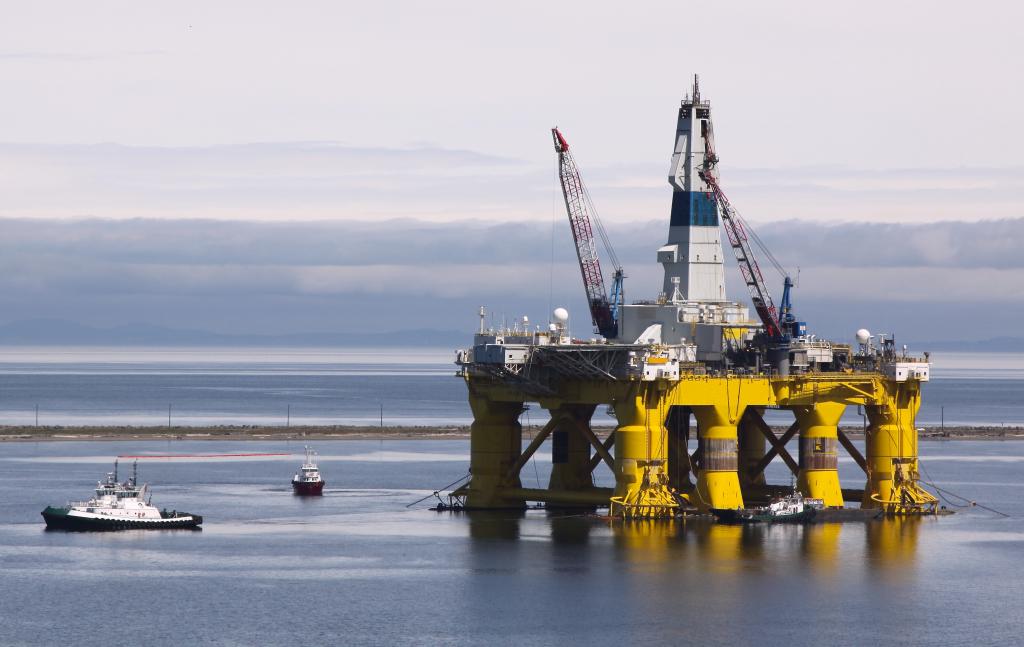
Arctic Cooperation
International cooperative efforts on the environment can be traced back to the 1972 UN Conference on the Human Environment, held in Stockholm, Sweden, which opened a new era of environmental diplomacy. The Stockholm Conference first expressed the idea that marine environmental protection is the international community’s responsibility and is not a matter subject to the discretion of the world shipping industry or individual countries (Lamson, 1987). While not explicitly mentioned in the Stockholm Action Plan, protecting the Arctic represents an example of where bordering countries from different continents with varied interests can cooperate.
On 1 October 1987, then Soviet leader Mikhail Gorbachev called for international cooperation and a “zone of peace” in the Arctic. Speaking in Murmansk, the largest city above the Arctic Circle in what was then the Soviet Union, he called for East-West talks to restrict military activity in the northern seas. While military cooperation was met with resistance and has yet to be realized, many viewed his entreaties on the environmental and economic fronts as “laying the foundation” for future cooperation in the Arctic. The steps he outlined, often referred to as the Murmansk Initiative, provided inspiration for some tangible achievements. His call for scientific research coordination provided additional impetus to talks already underway for what became the International Arctic Science Committee in 1990. More significantly, his call for cooperation on environmental protection and management contributed to the establishment of the Arctic Council, the preeminent international forum on Arctic issues.
The community and interrelationship of the interests of our entire world is felt in the northern part of the globe, in the Arctic, perhaps more than anywhere else.
Following Gorbachev’s speech, Finland’s Foreign and Environment Ministers invited the Arctic States to Rovaniemi in 1989 to discuss how they could address Arctic degradation. Two years later, they established the Arctic Environmental Protection Strategy (AEPS) to address the region’s environmental challenges. While the AEPS was considered a “landmark” step, Canada supported a more formal and expanded forum to enhance cooperation among Arctic countries, and ensure the inclusion of Indigenous Peoples. In 1995, under the leadership of Mary Simon, a member of the Inuit community, Canada initiated discussions with other Arctic countries to transform the AEPS into a new organization with a broader mandate and Indigenous participation (Arctic Council, 2021).
On 19 September 1996 in Ottawa, Canada, the Arctic Council was established. The Council consists of the eight Arctic countries: the Arctic Five (the five coastal states)—the United States, the Russian Federation, Canada, Denmark, and Norway—plus Sweden, Finland, and Iceland. It is unique in that Indigenous communities are formal “Permanent Participants,” a status that ensures their full participation in Council deliberations. In addition to the eight Arctic states and six Permanent Participants (representing Indigenous groups from all over the Arctic), the Council has 38 observers, including 13 non-Arctic states, intergovernmental and interparliamentary organizations, and nongovernmental organizations (NGOs).
The Ottawa Declaration set up the basic framework and mandate of the Council, which currently has six working groups:
- Arctic Monitoring and Assessment Programme (AMAP) monitors and assesses pollution and climate change issues.
- Conservation of Arctic Flora and Fauna Working Group (CAFF) focuses on biodiversity-related issues and enables the exchange of data and information on shared species and habitats.
- Emergency Prevention, Preparedness and Response Working Group (EPPR) provides a framework for responding to environmental emergencies.
- Protection of the Arctic Marine Environment Working Group (PAME) addresses policy and non-emergency response measures related to the protection of the marine environment from land and sea-based activities.
- Sustainable Development Working Group (SDWG) formalized the Council’s role beyond the environment.
- Arctic Contaminants Action Program (ACAP) aims to prevent and reduce pollution and environmental risks.
Three legally binding agreements have been negotiated under the auspices of the Arctic Council:
- 2011 Agreement on Cooperation on Aeronautical and Maritime Search and Rescue in the Arctic
- 2013 Agreement on Cooperation on Marine Oil Pollution Preparedness and Response in the Arctic
- 2017 Agreement on Enhancing International Arctic Scientific Cooperation
Expert groups address pressing and emerging issues, such as black carbon and methane and litter and microplastics. An expert group addressing the latter is developing the first comprehensive monitoring plan for plastics in the Arctic.
The Arctic Council is a model for global governance. It is inclusive of Indigenous Peoples and perspectives, committed to scientific-based decision-making, and a champion of regional peace and stability. However, it remains constrained by funding and its relatively weak legal structure. Its two-year rotating chairmanship has led to a lack of continuity in the Council’s work. New agendas are introduced every second year that often reflect the domestic interests of the host country more than the needs of the region (Exner-Pirot et al., 2019).
And in the rare case of a war initiated by an Arctic Council country, no less the current Chair, work can be essentially halted. On 3 March 2022, Canada, Denmark, Finland, Iceland, Norway, Sweden, and the US issued a joint statement following Russia’s invasion of Ukraine, stating that their representatives would not travel to the Russian Federation for Arctic Council meetings. Additionally, the statement notes a temporary pause in participation at all Council meetings and those of its subsidiary bodies, pending consideration of modalities to enable work to continue in view of the circumstances (US Department of State, 2022).
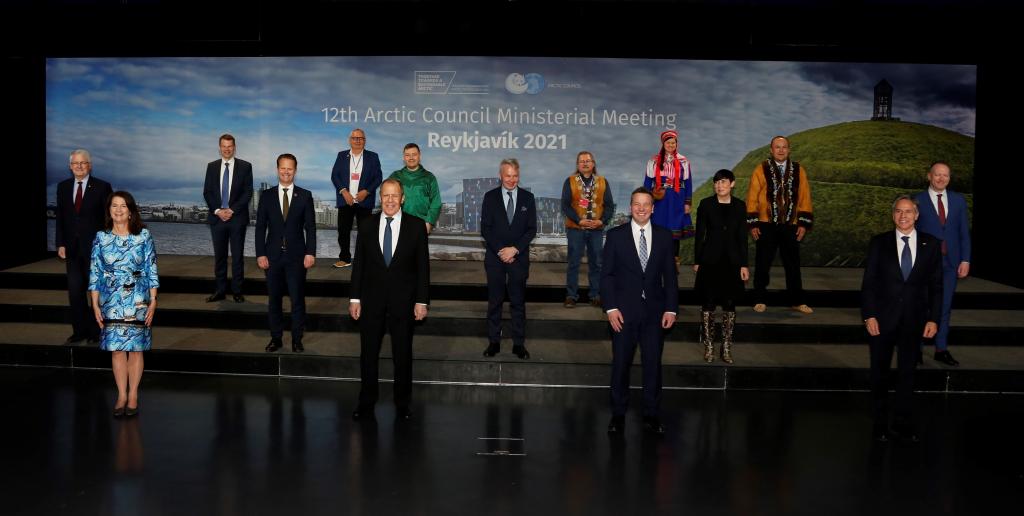
Persistent Organic Pollutants
One successful example of international cooperation in the Arctic was the response to the discovery of high levels of persistent organic pollutants (POPs) in the 1970s and 1980s. POPs, which are produced and released by mines, military sites, smelters, power stations, and other sources, can cause cancer, damage to the nervous system, reproductive disorders, and disruption of the immune system. POPs generally do not originate in the Arctic but are transported over long distances via air, water, and to a lesser extent migratory species. A 1997 AMAP study, Arctic Pollution Issues: A State of the Arctic Environment Report, found caribou in Canada’s Northwest Territories had 10 times the levels of polychlorinated biphenyls (PCBs) as the lichen on which they grazed, and wolves, which eat the caribou, had nearly 60 times as much (US EPA, 2009). Indigenous Peoples in the Arctic are exposed to POPs by consuming fish and other animals. This discovery served as a catalyst for what ultimately became the Stockholm Convention on Persistent Organic Pollutants, which calls on governments to eliminate or reduce the release of POPs into the environment.
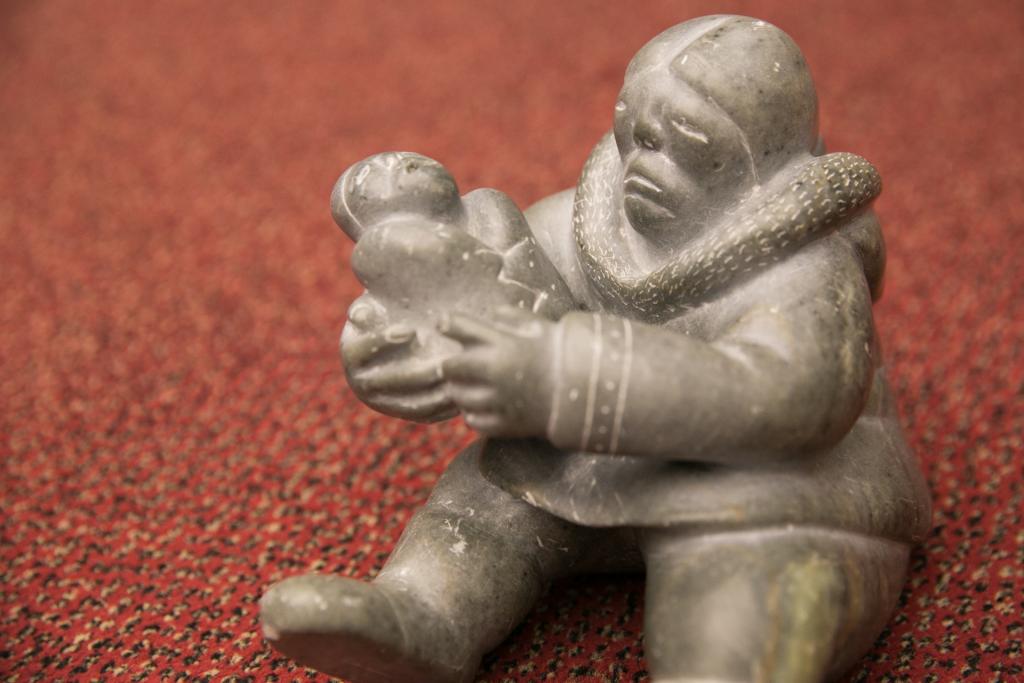
A soapstone carving of an Inuit mother cradling her child symbolizes the importance of this issue to Indigenous Peoples in the Arctic. It sat by John Buccini, a Canadian diplomat, as he chaired the Intergovernmental Negotiating Committee responsible for the final legally binding agreement on POPs. The carving was a gift from Sheila Watt-Cloutier, an Inuit woman, who was influential in getting the Stockholm Convention negotiated and adopted.
[A] poisoned Inuk child, a poisoned Arctic, and a poisoned planet are all one and the same.
The Convention’s preamble acknowledges Arctic ecosystems and Indigenous communities are particularly at risk because of the “biomagnification of POPs and that contamination of their traditional foods is a public health issue.” A report has found that restricting and banning the use of these chemicals has had positive impacts on the Arctic (NIST, 2018), confirming the successful implementation of the Stockholm Convention.
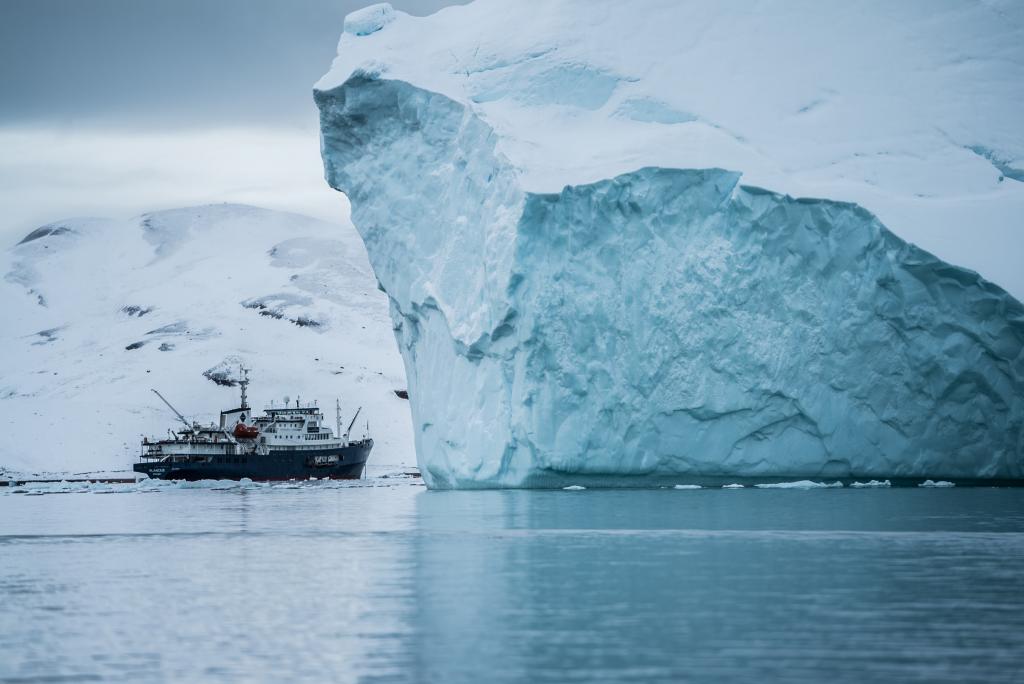
The Arctic as a Bellwether
While what happens in the rest of the world affects the Arctic, the reverse is also true. “The Arctic is a bellwether,” warned former UN Secretary-General Ban Ki-moon. What is happening in the Arctic affects other parts of the world and should serve as a warning to us all. Direct links can be made between more extreme temperature fluctuations—including hotter summers in the US and Canada, warming of the Mediterranean Sea and East Asia, and colder winters and more snow in mid-latitudes across North America, Europe, and East Asia—and diminishing summer Arctic sea ice that changes atmospheric circulation patterns (Thompson, 2016). To ensure the Arctic survives, economic development in the region must be balanced with environmental protection.
Greenpeace first floated the idea of an Arctic sanctuary at the UN Conference on Sustainable Development (Rio+20) in Rio de Janeiro, Brazil, in 2012. Greenpeace called for a protected area that would be off-limits to extractive and destructive uses, covering the central Arctic Ocean beyond the 200-nautical mile limit of Arctic coastal states’ exclusive economic zones. Fishing, exploration, and extraction of hydrocarbons or other minerals from the seabed, as well as military activity would be prohibited. Strict environmental controls would apply to shipping in the area, including the prohibition of heavy fuel oil use (Greenpeace, 2014). As the proposed sanctuary would be “beyond national jurisdiction,” the Arctic Council and other members of the international community would need to work together to make it happen.
Short of an Arctic sanctuary, a range of policy options exist, many of which are under discussion in various international fora or at the national level. For example, a network of marine protected areas could also be established to help halt and reverse environmental damage that is already occurring from increased shipping.
We need to save the Arctic not because of the polar bears, and not
because it is the most beautiful place in the world, but because our very survival depends upon it.
The International Maritime Organization’s (IMO) International Code for Ships Operating in Polar Waters (Polar Code), which entered into force in 2017, includes measures to mitigate the impacts of shipping in the Arctic. It details ship designs to prevent accidents and limits the discharge of oil, chemicals, sewage, and garbage. However, it does not go far enough to prevent shipping accidents and pollution (Schopmans, 2019). While a “ban” on heavy fuel oil, a source of black carbon emissions, was adopted in 2021, most ships are likely to continue using it until 2029 and beyond (Reuters, 2021). By then, it may be too late to reverse any environmental devastation caused by shipping.
Nevertheless, most Arctic issues—from Indigenous knowledge and livelihoods to shipping to sanitation to wildlife protection—come back to climate change and its impacts. The reluctance of some countries, especially the United States and Russia, over the years to commit to mitigating climate change through reducing greenhouse gas emissions, let alone discuss the challenges of adapting to a post-petroleum future, has prevented the Council from addressing this major threat (Exner-Pirot et al., 2019). Stronger and broader local, national, and international measures to reduce greenhouse gas emissions must be implemented. Increased funding and investment, as well as capacity, is also critical to implement these and other actions in the region.
The disappearance of sea ice and the plight of Arctic wildlife and Indigenous culture should serve as a wake-up call. It is not too late to reverse the trend and slow the melting—but that window of opportunity may close in the face of continued inaction.
Works Consulted
Adler, N. (2020). 10 million snowblowers? Last-ditch ideas to save the Arctic ice. The Guardian. https://www.theguardian.com/usnews/2020/oct/20/last-ditch-ideas-to-save-the-arctic-ice
Arctic Council. (2021). History of the Arctic Council. https://www.arctic-council.org/about/timeline
Beers, R. (2018). Treaty banning dangerous chemicals helped Arctic wildlife, study shows. CBC News. https://www.cbc.ca/news/canada/north/stockholm-convention-arctic-wildlife-pollutants-1.4804089
BBC. (2020). Russian Arctic oil spill pollutes big lake near Norilsk. https://www.bbc.com/news/world-europe-52977740
BBC. (2021). Norilsk Nickel: Mining firm pays record $2bn fine over Arctic oil spill. https://www.bbc.com/news/world-europe-56350953
Borunda, A. (2020). Arctic summer sea ice could disappear as early as 2035. National Geographic. https://www.nationalgeographic.com/science/article/arctic-summer-sea-ice-could-be-gone-by-2035
Comer, B. (2020). IMO’s draft HFO “ban” is nothing of the sort. International Council on Clean Transportation. https://www.theicct.org/blog/staff/imo-draft-hfo-ban-2020
Comer, B., Olmer, N., Mao, X., Roy, B., & Rutherford, D. (2017). Prevalence of heavy fuel oil and black carbon in Arctic shipping, 2015 to 2025. International Council on Clean Transportation. https://www.theicct.org/publications/prevalence-heavy-fuel-oil-and-black-carbon-arctic-shipping-2015-2025
Council on Foreign Relations. (2014). The Emerging Arctic. https://www.cfr.org/emergingarctic/#!/
Dennis, B., & Patel, K. (2021). The Arctic could get more rain and less snow sooner than projected. Here’s why that matters. Washington Post. https://www.washingtonpost.com/climate-environment/2021/11/30/arctic-rain-snow-climate-change
Dickie, G. (2020). The Arctic is in a death spiral. How much longer will it exist? The Guardian. https://www.theguardian.com/us-news/nginteractive/2020/oct/13/arctic-ice-melting-climate-change-global-warming
Exner-Pirot, H. (2016). How Gorbachev shaped future Arctic policy 25 years ago. Anchorage Daily News. https://www.adn.com/arctic/article/how-gorbachev-shaped-future-arctic-policy-25-years-ago/2012/10/01/
Exner-Pirot, H., Ackrén, M., Loukacheva, N., Nicol, H., Nilsson, A. E., & Spence, J. (2019). Form and Function: The Future of the Arctic Council. Law and Governance. Arctic Institute. https://www.thearcticinstitute.org/form-function-future-arctic-council/
Greenpeace. (2014). Arctic Sanctuary: Global Commons, Environmental Protection & Future Proofing. https://www.greenpeace.org/static/planet4-internationalstateless/2014/06/190fb9b9-arcticsanctuary.pdf
Heikkilä, Markku. (2016). It all started in Rovaniemi. Shared Voices. https://www.uarctic.org/shared-voices/shared-voices-magazine-2016-special-issue/it-all-started-inrovaniemi/
Intergovernmental Panel on Climate Change. (2019). Special Report on the Ocean and Cryosphere in a Changing Climate: Summary for Policymakers. https://www.ipcc.ch/srocc/
Kankaanpää, P., & Young, O. (2012). The effectiveness of the Arctic Council. Polar Research, 31(1). https://www.doi.org/10.3402/polar.v31i0.17176
Kaplan, S. (2021). Climate change has destabilized the Earth’s poles, putting the rest of the planet in peril. Washington Post. https://www.washingtonpost.com/climateenvironment/2021/12/14/climate-change-arctic-antarctic-poles/
Knijf, N. (2016). Pianist performs in Arctic to raise awareness. Popular Mechanics. https://www.popularmechanics.co.za/videos/pianist-preforms-arctic-raise-awareness/
Kuersten, A. (2016). The Arctic five versus the Arctic Council. Arctic Yearbook. https://www.arcticyearbook.com/images/yearbook/2016/Briefing_Notes/9.Kuersten.pdf
Lamson, C. (1987). Arctic shipping, marine safety and environmental protection. Marine Policy, 11(1), 3-15. https://www.doi.org/10.1016/0308-597X(87)90035-2
Manulak, M. W. (2015). Multilateral solutions to bilateral problems: The 1972 Stockholm conference and Canadian foreign environmental policy. International Journal, 70(1), 4-22. https://www.doi.org/10.1177/0020702014546338
McCrystall, M. R., Stroeve, J., Serreze, M., Forbes, B. C., & Screen, J.A. (2021). New climate models reveal faster and larger increases in Arctic precipitation than previously projected. Nature Communications, 12, 6765. https://www.doi.org/10.1038/s41467-021-27031-y
National Institute of Standards and Technology. (2018). Many Arctic pollutants decrease after market removal and regulation: Stockholm Convention having impact. Science Daily. https://www.sciencedaily.com/releases/2018/08/180827180752.htm
New Internationalist. (2009). The Arctic: A History. https://www.newint.org/features/2009/07/01/arctic-history
Purtill, C. (2021). Melting Arctic is a bonanza for the ocean’s natural born killers. New York Times. https://www.nytimes.com/2021/12/02/science/killer-whales-arctic-ocean.html
Reuters. (2021). UN adopts ban on heavy fuel oil use by ships in Arctic. https://www.reuters.com/business/energy/un-adopts-ban-heavy-fuel-oil-use-by-ships-arctic-2021-06-17/
Schopmans, H. (2019). Revisiting the Polar Code: Where do we stand? Arctic Institute. https://www.thearcticinstitute.org/revisiting-polar-code/
Shankman, S. (2018). These climate pollutants don’t last long, but they’re wreaking havoc on the Arctic. Inside Climate News. https://www.insideclimatenews.org/news/19032018/global-warming-arctic-airpollution-short-lived-climate-pollutants-methane-black-carbon-hfcs-slcp/
Thompson, K. (2016). What happens in the Arctic doesn’t stay in the Arctic. Greenpeace Research Laboratories Technical Report (Review), No. 04-2016. https://www.archivo-es.greenpeace.org/espana/Global/espana/2016/report/artico/ArticoEN-LR.pdf
Thorsberg, C. (2021). Rain fell for the first time on Greenland’s summit. Here’s why it matters. Sierra Club. https://www.sierraclub.org/sierra/rain-fell-for-first-time-greenland-s-summit-here-s-why-it-matters
US Department of State. (2022). Joint Statement on Arctic Council Cooperation Following Russia’s Invasion of Ukraine. Press Release. www.state.gov/joint-statement-on-arctic-council-cooperation-following-russias-invasion-of-ukraine/
US Environmental Protection Agency. (2009). Persistent organic pollutants: A global issue, a global response. https://www.epa.gov/international-cooperation/persistent-organic-pollutants-global-issue-global-response
US Environmental Protection Agency. (2016). Methane and black carbon impacts on the Arctic: Communicating the science. https://www.epa.gov/sites/production/files/2016-09/documents/arctic-methane-black-carbon_communicating-the-science.pdf
Voosen, P. (2021). The Arctic is warming four times faster than the rest of the world. Science. https://www.science.org/content/article/arctic-warming-four-times-faster-rest-world
Additional downloads
You might also be interested in
The Rising Pressures on Ocean Governance
The ocean is under serious threat. Stressors include overfishing, marine pollution, habitat destruction, and acidification.
The Water and Sanitation Challenge
For universal access to water to become a reality, governments and private-sector service providers should adopt a human rights-based approach to ensure water and sanitation services are safe, available, accessible, affordable, and culturally acceptable.
Web of resilience
Pakistan's development model has still not recognised the limits of the natural environment and the damage it would cause, if violated, to the sustainability of development and to the health and well-being of its population. Pakistan’s environment journey began with Stockholm Declaration in 1972. A delegation led by Nusrat Bhutto represented the country at the Stockholm meeting, resulting in the establishment of the Urban Affairs Division (UAD), the precursor of today’s Ministry of Climate Change. In setting the country’s environmental agenda, we were inspired by the Stockholm Principles, but in reality, we have mostly ignored them for the last five decades.
Pathways to Sustainable Cities
Urban planning needs to be inclusive and responsive to the needs of local communities and build on participatory approaches that foster the engagement of marginalized actors.
